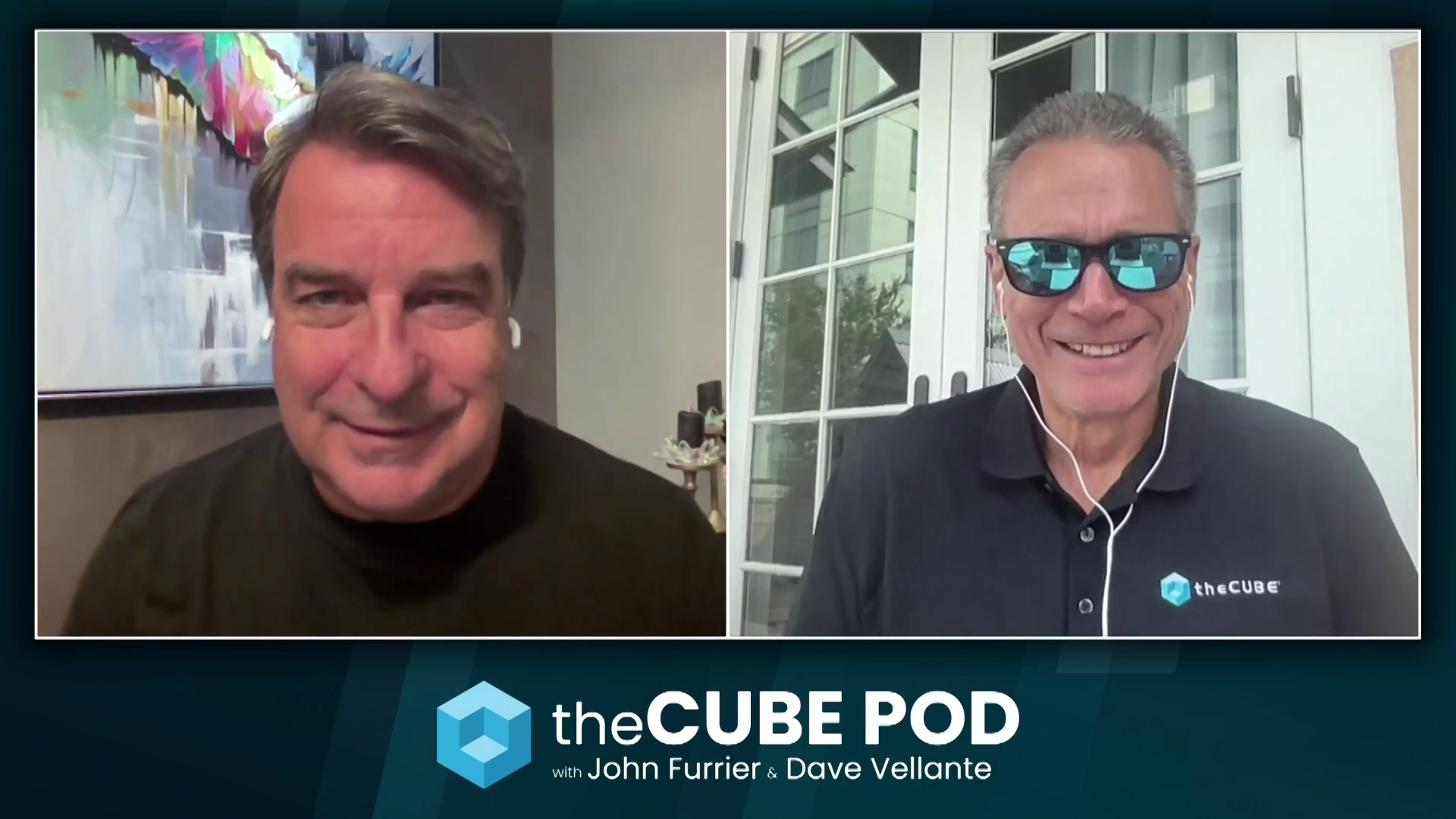 AI
AI
 AI
AI
 AI
AI
It’s been another big week in high-tech coverage for theCUBE, including a special broadcast with VAST Data Inc. for its Cosmos event and live analysis from Anyscale’s Ray Summit event.
But the recent OpenAI funding round was a big subject for theCUBE Research Founding Analysts John Furrier (pictured, left) and Dave Vellante (right) to dive into on the latest episode of the CUBE Podcast.
OpenAI brought in $6.6 billion from investors to support the company’s artificial intelligence research. It’s so much cash that it’s almost mind-blowing, according to Furrier.
“Essentially, it’s a bigger valuation than most [initial public offerings] in the history of tech,” Furrier said. “OpenAI will dominate our conversation. I’ve got a lot of opinions on this … it’s just a lot of different storylines on OpenAI.”
The latest round of OpenAI funding points to what is now becoming a generational shift that has been chronicled on theCUBE. It’s historic funding and a historic company, according to Furrier.
“The question is, will this be a $1 trillion company? And the answer is probably going to be, ‘Yes, if they continue,’” Furrier said.
The OpenAI funding round does pose some additional questions. The first is what OpenAI has to do to maintain its competitive position, according to Furrier.
“Do they have to build their own cloud? So many dimensions to this, right? Is it a good investment? Are the cards on the table, the cards that are really going to drive the future?” Furrier said. “What cards will come out next on the table?”
The Wall Street Journal has reported that $250 million is the minimum amount required to review OpenAI’s financial documents. The company also has two years to achieve for-profit status.
“If they don’t achieve it, supposedly the investors can get their money back … I don’t know how that’s going to work,” Vellante said. “The money’s going to be gone.”
In the wake of the OpenAI funding round, many people have remarked that the funding is unbelievable. But it’s important to take a step back, according to Vellante.
“I am not surprised at all. If you believe that this is the biggest wave in the history of tech waves, which everybody does, right or wrong, bigger than [personal computers], bigger than the internet, bigger than cloud, bigger than mobile,” Vellante said. “If that’s the case, then you would expect that you would have a raise like this that’s bigger than anything we’ve ever seen before.”
Given recent developments, it’s worth considering what currently makes up OpenAI’s moat. Right now, it involves the fact that they have a mindshare and acceleration with the audience and that their product is being used, according to Furrier.
“You’re seeing kind of a Moore’s Law-like Flywheel where the reducing costs and increasing capability is the classic price performance. We saw Intel do that with their processors,” Furrier said. “On the infrastructure side, Nvidia and others are bringing in there. So that’s going to help their moat get better.”
While OpenAI’s position is strong, competition remains. Google is seen as a key challenge, even if OpenAI is likely to continue to dominate.
“Google is hitting developers right now that are in their 20s. They were in middle school using Google Docs,” Furrier said. “I think Google has the large-scale, and with Google Cloud, they’re making those moves to build an ecosystem.”
Salesforce Inc. has its own ecosystem play for AI, recently unveiling plans for the future of Salesforce’s agentic platform during Dreamforce. The company’s strategy makes sense at this time, according to Vellante.
“I love their strategy. I will just say this: Salesforce has always struggled on doing integration. Now is the time,” Vellante said. “It has a chance to integrate all those piece parts that are bought. The center of their universe is the Data Cloud. They’re building out the harmonization layer. They’re building out an agent control framework.”
The Tableau keynote at Dreamforce is well worth a watch, according to Vellante. It included comments from Ryan Aytay, president and chief executive officer of Tableau.
“The Tableau one describes, in my opinion, what the future of [business intelligence] is going to look like, what the future of the application stack is going to look like [and] how the integration should occur,” Vellante said. “And it was a great vision. So I would encourage people to go listen to that, if you want to see what the future is like. But Salesforce, again, they’ve never been great at doing the integration, but now is their opportunity.”
Here’s the full theCUBE Pod episode:
Don’t miss out on the latest episodes of “theCUBE Pod.” Join us by subscribing to our RSS feed. You can also listen to us on Apple Podcasts or on Spotify. And for those who prefer to watch, check out our YouTube playlist. Tune in now, and be part of the ongoing conversation.
Support our open free content by sharing and engaging with our content and community.
Where Technology Leaders Connect, Share Intelligence & Create Opportunities
SiliconANGLE Media is a recognized leader in digital media innovation serving innovative audiences and brands, bringing together cutting-edge technology, influential content, strategic insights and real-time audience engagement. As the parent company of SiliconANGLE, theCUBE Network, theCUBE Research, CUBE365, theCUBE AI and theCUBE SuperStudios — such as those established in Silicon Valley and the New York Stock Exchange (NYSE) — SiliconANGLE Media operates at the intersection of media, technology, and AI. .
Founded by tech visionaries John Furrier and Dave Vellante, SiliconANGLE Media has built a powerful ecosystem of industry-leading digital media brands, with a reach of 15+ million elite tech professionals. The company’s new, proprietary theCUBE AI Video cloud is breaking ground in audience interaction, leveraging theCUBEai.com neural network to help technology companies make data-driven decisions and stay at the forefront of industry conversations.